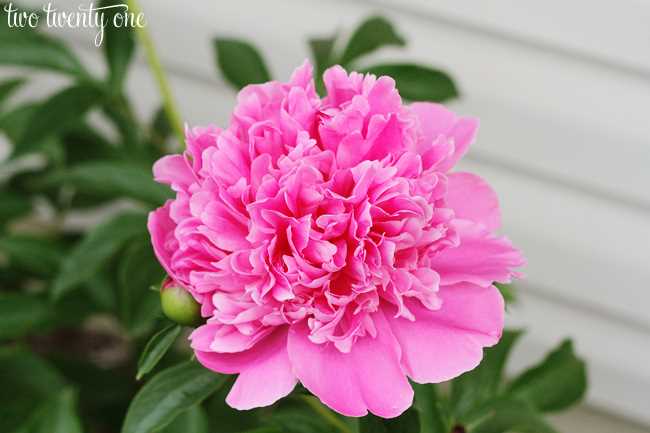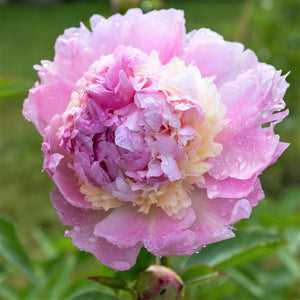- Spring Tricks for Growing
- 1. Choose the Right Location
- 2. Prepare the Soil
- 3. Planting Depth
- 4. Watering
- 5. Fertilizing
- 6. Support
- 7. Deadheading
- 8. Mulching
- 9. Disease and Pest Control
- 10. Division
- Conclusion
- Lush and Colourful
- Vibrant Peony Varieties
- Optimal Growing Conditions
- Proper Pruning Techniques
- Arranging Peony Bouquets
- Enjoying the Beauty of Peonies
- Peonies in Just
- Introduction
- 1. Choose the Right Location
- 2. Prepare the Soil
- 3. Planting Peonies
- 4. Watering
- 5. Fertilizing
- 6. Pruning
- 7. Pest and Disease Control
- Conclusion
- Half an Hour!
- Discover the Spring Tricks for Growing Lush and Colourful Peonies in Just Half an Hour!
- Prepare Your Soil
- Choose the Right Location
- Planting and Watering
- Support Your Peonies
- Fertilizing and Mulching
- Dividing and Transplanting
- Protecting from Pests and Diseases
- Best Tips and Tricks for Growing Lush and Colourful Peonies
- 1. Choose the Right Location
- 2. Properly Prepare the Soil
- 3. Planting Depth Matters
- 4. Watering and Mulching
- 5. Fertilize Regularly
- 6. Provide Support
- 7. Deadhead and Divide
- 8. Pest and Disease Control
- 9. Enjoy the Beautiful Blooms
- Tricks to Growing Lush and Colourful Peonies in Just Half an Hour!
- 1. Choose the Right Variety
- 2. Provide Adequate Sunlight
- 3. Use Well-Draining Soil
- 4. Water Deeply and Consistently
- 5. Feed with Fertilizer
- 6. Support the Stems
- 7. Deadhead Spent Blooms
- 8. Protect from Pests and Diseases
- 9. Divide and Transplant Every Few Years
- 10. Enjoy the Beauty
- Cultivate Beautiful
- Choose the Right Variety
- Provide Adequate Sunlight
- Prepare the Soil
- Planting and Watering
- Mulching and Fertilizing
- Support and Deadheading
- Protecting from Pests and Diseases
- Enjoy the Beauty
- Peonies this Spring!
- Why Peonies?
- Choosing the Right Variety
- Planting and Care Tips
- Dealing with Pests and Diseases
- Enjoying the Blooms
- In Conclusion
- Questions and Answers:
- What are some tips for growing peonies?
- How much sunlight do peonies need?
- What kind of soil do peonies prefer?
- Can peonies be grown in containers?
- How long does it take for peonies to bloom?
- What are some common problems that peonies may face?
- Videos: Peony Growing Guide!!! How to Plant, Grow, Harvest, Divide, & Transplant Peonies

Are you looking to add a touch of beauty and elegance to your garden this spring? Look no further than peonies! These stunning flowers come in a variety of colors and sizes, and with a few simple tricks, you can have a lush and colorful peony garden in just half an hour.
The first step to growing peonies is to choose the right location. Peonies prefer a sunny spot with well-drained soil. Make sure to prepare the soil by adding organic matter, such as compost or well-rotted manure, to improve its fertility and drainage.
Once you have selected the perfect spot, it is time to plant the peonies. Dig a hole that is about 2 feet wide and deep, and place the peony root in the hole, making sure that the buds are facing upwards. Cover the root with soil, leaving the tip of the buds slightly exposed. Water the plant thoroughly and mulch around the base to help retain moisture.
As the peonies start to grow, it is important to provide them with proper care. Water them regularly, especially during dry spells, and make sure to remove any weeds that may compete for nutrients. You can also use a balanced fertilizer to promote healthy growth and blooming.
With these simple tricks, you can enjoy a garden full of lush and colorful peonies in just half an hour. So why wait? Start planting your peonies today and get ready to be amazed by their beauty!
Spring Tricks for Growing
1. Choose the Right Location
Peonies thrive in full sun but can tolerate some shade. Choose a location that receives at least 6 hours of direct sunlight per day. Make sure the soil has good drainage to prevent waterlogged roots.
2. Prepare the Soil
Peonies prefer rich, well-draining soil with a pH level between 6.5 and 7.5. Before planting, amend the soil with organic matter such as compost or well-rotted manure to improve its fertility and drainage.
3. Planting Depth


When planting peonies, make sure to place the tubers (or bare roots) at the right depth. The eyes, which are small red or pink buds, should be planted no more than 2 inches below the soil surface. Planting too deep can result in poor blooming.
4. Watering
Water your peonies deeply once a week, especially during dry spells. Make sure to water the plants at the base, avoiding the foliage, to prevent diseases. Overwatering can lead to root rot, so ensure the soil is well-drained.
5. Fertilizing
Apply a balanced fertilizer, such as 10-10-10, in early spring before the plants start to grow. Follow the package instructions for the proper amount to use. Avoid over-fertilization, as it may result in weak stems and flopping flowers.
6. Support
As peonies grow, their heavy blooms may cause the stems to bend or break. To prevent this, provide support for the plants. Use stakes or a peony ring to keep the stems upright and prevent them from flopping over.
7. Deadheading
After the peonies have finished blooming, remove the spent flowers to encourage more blooms and prevent the plant from wasting energy on seed production. Deadheading also improves the overall appearance of the plant.
8. Mulching
Apply a layer of organic mulch around the base of the peony plants to conserve moisture, suppress weeds, and regulate soil temperature. Use compost, straw, or shredded bark, and make sure the mulch doesn’t touch the stems to prevent rot.
9. Disease and Pest Control


Monitor your peony plants for signs of diseases such as botrytis blight or powdery mildew. If necessary, use appropriate fungicides or organic remedies to treat the affected plants. Keep an eye out for pests like aphids or spider mites and take preventive measures or use insecticidal soap if needed.
10. Division
Over time, peonies may become overcrowded, leading to reduced blooms. To rejuvenate the plants and improve flowering, divide them every 3-5 years in early fall or early spring. Dig up the clumps and separate them into smaller sections with 3-5 eyes each, then replant them.
Conclusion


By following these spring tricks for growing peonies, you can enjoy lush and colourful blooms in your garden. Remember to choose the right location, prepare the soil, plant at the right depth, water and fertilize correctly, provide support, deadhead, mulch, and prevent diseases and pests. With proper care, your peony plants will thrive and bring beauty to your outdoor space.
Lush and Colourful
Vibrant Peony Varieties
Peonies come in a wide range of vibrant colors, from deep reds to soft pinks and creamy whites. Some popular peony varieties known for their lush and colourful blooms include:
- Festiva Maxima: This variety features large, pure white flowers with crimson flecks and a sweet fragrance.
- Coral Charm: Known for its unique coral-orange color, this peony variety starts as a coral bud and gradually opens up to reveal a stunning golden center.
- Sarah Bernhardt: This classic peony variety boasts large, double, rose-pink flowers that add a touch of elegance to any garden.
- Karl Rosenfield: With its deep crimson blooms and strong fragrance, this peony variety is a popular choice for creating bold and dramatic floral arrangements.
Optimal Growing Conditions
To ensure your peonies grow lush and colourful, it’s important to provide them with the right growing conditions. Here are some tips:
- Sunlight: Peonies thrive in full sun or at least six hours of direct sunlight each day. Choose a location in your garden that receives ample sunlight.
- Soil: Peonies prefer well-draining soil that is rich in organic matter. Prepare the soil by adding compost or well-rotted manure before planting.
- Watering: While peonies don’t like to be over-watered, they do require consistent moisture. Water them deeply once a week, providing approximately 1 inch of water.
- Fertilization: Feed your peonies with a balanced slow-release fertilizer in early spring and again after they have finished blooming.
- Support: As peonies produce large, heavy blooms, it’s important to provide support to prevent the stems from bending or breaking. Use stakes or peony rings to keep them upright.
Proper Pruning Techniques
Pruning is essential for maintaining the health and appearance of your peonies. Follow these pruning techniques:
- Cutting back: In late autumn or early spring, cut back the old foliage to the ground to promote new growth and prevent the spread of diseases.
- Deadheading: Once the peonies finish blooming, remove the spent flowers to encourage the plant to put its energy into growing larger and more vibrant blooms.
- Dividing: Peonies can benefit from division every 4-5 years. Dig up the clump, carefully separate the roots, and replant them in a new location to give each plant more space to grow.
Arranging Peony Bouquets
Peonies make beautiful cut flowers and can be arranged in stunning bouquets. Here are some tips for creating lush and colourful peony arrangements:
- Harvesting: Cut peonies early in the morning when the buds have just started to open. Choose stems with sturdy support and avoid those with drooping or damaged flowers.
- Preparing the stems: Remove any leaves that will be below the water line to prevent them from rotting. Cut the stems at an angle to promote water absorption.
- Vase selection: Choose a vase with a wide opening to allow the peony blooms to fully open. Fill the vase with fresh, clean water.
- Arranging: Start by placing the larger peony blooms in the center of the bouquet and then add smaller blooms and foliage around them. Create a balanced and visually appealing arrangement.
- Maintenance: Change the water every two days and recut the stems to prolong the life of your peony bouquet.
Enjoying the Beauty of Peonies
With the right care and attention, you can enjoy the lush and colourful blooms of peonies in your garden or as stunning floral arrangements. Explore different varieties, experiment with arrangements, and embrace the beauty of these magnificent flowers!
Peonies in Just
Introduction
Peonies are beautiful and vibrant flowers that can add a touch of elegance to any garden. With the right tricks and techniques, you can easily grow lush and colourful peonies in just half an hour. In this article, we will share some tips to help you achieve stunning blooms in no time.
1. Choose the Right Location
Peonies thrive in well-draining soil and require at least six hours of direct sunlight daily. Choose a spot in your garden that receives ample sunlight and has good drainage. Avoid areas that are prone to waterlogging as it can cause root rot.
2. Prepare the Soil
Before planting peonies, it is important to prepare the soil properly. Peonies prefer slightly acidic to neutral soil with a pH level of 6.0 to 7.0. Test the soil and amend it if needed by adding organic matter such as compost or well-rotted manure.
3. Planting Peonies
When planting peonies, dig a hole that is wide and deep enough to accommodate the roots comfortably. Place the peony in the hole with the eyes (buds) facing upwards and cover them with soil. Leave a spacing of at least 3 feet between each plant to allow for proper air circulation.
4. Watering
Peonies require regular watering, especially during dry spells. Water deeply, allowing the water to penetrate the soil at least 6 inches. However, make sure not to overwater as it can lead to fungal diseases.
5. Fertilizing
Applying a balanced fertilizer with a ratio of 10-10-10 or 5-10-10 in early spring can promote healthy growth and blooming. Avoid overfertilizing as it can result in lush foliage but fewer flowers.
6. Pruning
Prune peonies in early spring by removing any dead or damaged stems. This will help improve air circulation and prevent the spread of diseases. Additionally, deadheading the spent blooms will encourage the plant to produce more flowers.
7. Pest and Disease Control
Keep an eye out for common pests such as aphids, ants, and botrytis blight. Use organic insecticides or natural remedies to control pests if necessary. Proper sanitation practices, such as removing and disposing of infected plant parts, can help prevent the spread of diseases.
Conclusion
Growing lush and colourful peonies doesn’t have to be a time-consuming task. With these simple tricks and techniques, you can enjoy stunning blooms in just half an hour. Follow the steps outlined in this article, and soon you’ll have a thriving peony garden that will bring joy and beauty to your outdoor space.
Half an Hour!
- Prepare the Soil – Before planting your peonies, make sure the soil is rich in organic matter. Add compost or well-rotted manure to improve its fertility. This step will provide essential nutrients for the plants to grow lush and colorful.
- Choose the Right Location – Peonies thrive in full sunlight, so select a spot in your garden that receives at least 6 hours of direct sunlight per day. Ensure that the area has good drainage to prevent waterlogging, which can cause root rot.
- Planting Time – Spring is the best time to plant peonies. Dig a hole that is wide and deep enough to accommodate the peony root system. Place the peony crown at ground level and cover it with soil. Water thoroughly after planting.
- Watering and Mulching – Peonies require regular watering, especially during dry periods. Water deeply, ensuring that the soil is moist but not waterlogged. Apply a layer of organic mulch around the plants to conserve moisture and suppress weed growth.
- Fertilizing – Apply a balanced, slow-release fertilizer in early spring to promote healthy growth. Follow the manufacturer’s instructions for application rates. Avoid over-fertilizing, as it can lead to weak stems and fewer blooms.
- Supporting the Plants – Peonies can grow quite tall and heavy, so it’s essential to provide support. Install stakes or cages around the plants early in the growing season to keep them upright. This will prevent the flowers and stems from bending or breaking.
- Pruning and Deadheading – Deadhead the spent blooms to encourage the growth of more flowers. Prune the peony plants in late fall or early spring by cutting back the stems to ground level. This will help maintain the shape of the plant and prevent the spread of diseases.
- Dealing with Pests and Diseases – Peonies are generally resistant to pests and diseases. However, keep an eye out for common problems such as powdery mildew, botrytis blight, and nematodes. Treat any issues promptly with the appropriate fungicides or insecticides.
- Dividing the Plants – Peonies can become overcrowded over time, leading to reduced flowering. After several years, consider dividing the plants to rejuvenate them. Dig up the clumps in early fall and separate them into smaller sections, making sure each division has several eyes. Replant the divisions at the same depth as before.
- Enjoy the Blooms – With proper care and maintenance, your peonies will reward you with lush, colorful blooms in just half an hour of work per day. Take the time to appreciate their beauty and fragrance, and consider cutting some blooms for indoor floral arrangements.
Discover the Spring Tricks for Growing Lush and Colourful Peonies in Just Half an Hour!
Prepare Your Soil
Before planting your peonies, it’s important to prepare the soil properly. Peonies thrive in well-drained soil that is rich in organic matter. Start by removing any weeds or grass from the area where you will be planting. Then, mix in compost or well-rotted manure to improve the soil’s fertility. Make sure the soil is loose and crumbly before proceeding.
Choose the Right Location
Peonies need at least 6 hours of full sun each day to grow and bloom properly. It’s important to choose a location in your garden that receives the required amount of sunlight. Additionally, peonies prefer a spot that is protected from strong winds, as their large blooms can be easily damaged. Consider planting them near a fence or wall for added protection.
Planting and Watering


When planting your peonies, make sure to dig a hole that is wide enough to accommodate the roots without crowding them. Place the peony roots in the hole, making sure the eyes (buds) are facing upwards. Cover the roots with soil, leaving a small depression around the plant to hold water. Water the peony thoroughly after planting to help settle the soil.
Support Your Peonies
As peonies grow, their heavy blooms may cause the stems to bend or flop over. To prevent this, provide support for your peonies by using stakes or cages. Place them around the plant early in the season, before the buds start to form. This will help the plant grow straight and keep the blooms upright.
Fertilizing and Mulching
Fertilize your peonies in early spring, just as the new growth begins to emerge. Use a balanced fertilizer, such as a 10-10-10, following the instructions on the package. Apply the fertilizer evenly around the plants, avoiding direct contact with the stems and leaves. After fertilizing, apply a layer of organic mulch around the base of the plants to help conserve moisture and suppress weed growth.
Dividing and Transplanting
Peonies should be divided and transplanted every 5-10 years to maintain their health and vigor. The best time to divide peonies is in early fall, when the foliage starts to die back. Dig up the plant carefully, making sure to retain as many roots as possible. Divide the plant using a sharp knife, making sure each division has at least 3-5 healthy buds. Replant the divisions in a prepared soil, following the same planting instructions as before.
Protecting from Pests and Diseases
Peonies can be susceptible to pests and diseases, such as aphids, botrytis blight, and powdery mildew. To protect your plants, regularly inspect them for any signs of infestation or disease. If you spot any pests or signs of disease, act promptly to prevent further damage. Use organic pest control methods or consult with a local gardening expert for suitable treatments.
Best Tips and Tricks for Growing Lush and Colourful Peonies
1. Choose the Right Location
Peonies thrive in full sun, so select a location in your garden that receives at least 6-8 hours of direct sunlight each day.
Ensure that the soil is well-draining to prevent waterlogging, as peonies do not tolerate wet feet. If your soil is heavy or clay-based, consider adding organic matter to improve drainage.
2. Properly Prepare the Soil
Before planting your peonies, prepare the soil by digging a hole that is deep and wide enough to accommodate the entire root system. Loosen the soil and remove any weeds or debris.
Mix in compost or well-rotted manure to enrich the soil and improve its fertility. This will provide necessary nutrients for healthy peony growth.
3. Planting Depth Matters
Peonies should be planted with their eyes, or growth buds, just below the soil surface. Dig a hole deep enough so that the eyes are covered by about 1-2 inches of soil.
Planting too deep or too shallow can result in poor growth or failure to bloom. Take care to position the peony roots correctly before backfilling with soil.
4. Watering and Mulching
After planting, water the peonies thoroughly to settle the soil around the roots. Keep the soil evenly moist, but not soggy, throughout the growing season.
Apply a layer of organic mulch, such as straw or wood chips, around the base of the plants to conserve moisture and suppress weed growth.
5. Fertilize Regularly
Peonies benefit from regular fertilizing to promote strong growth and abundant blooms. Apply a balanced slow-release fertilizer in early spring and again in early summer.
Avoid over-fertilizing, as this can lead to weak stems and excessive foliage at the expense of flowers. Follow the instructions on the fertilizer packaging for proper application rates.
6. Provide Support
As peonies grow, they may require support to prevent their heavy blooms from toppling over. Install peony rings or stakes around the plants early in the season to provide support as they mature.
Be sure to position the support structures before the plants become too tall to avoid damaging the roots or delicate shoots.
7. Deadhead and Divide


Regular deadheading, or removing spent blooms, will encourage the plant to produce more flowers and prevent self-seeding. Simply snip off the faded blooms just below the flower head.
Peonies should be divided every 4-5 years to maintain their vigor and prevent overcrowding. Fall is the best time to divide peonies, as it allows the plants to establish new roots before winter.
8. Pest and Disease Control
Monitor your peonies regularly for signs of pests, such as aphids or spider mites, and treat them promptly with insecticidal soap or neem oil if necessary.
Prevent diseases like botrytis blight by providing good air circulation around the plants and avoiding overhead watering. If you notice signs of disease, remove the affected plant parts and dispose of them to prevent further spread.
9. Enjoy the Beautiful Blooms
Once your peonies are established and well-cared for, sit back and enjoy the beautiful and lush blooms they produce. Cut some blooms to bring indoors and create stunning floral arrangements.
Remember to share the beauty of peonies with others, as they make wonderful gifts for friends and family.
By following these tips and tricks, you can successfully grow lush and colourful peonies in your garden and create a breathtaking display every spring!
Tricks to Growing Lush and Colourful Peonies in Just Half an Hour!
1. Choose the Right Variety


When it comes to peonies, choosing the right variety is crucial for achieving lush and colourful blooms. Consider factors such as bloom time, flower form, and height. Some popular peony varieties include Sarah Bernhardt, Bowl of Beauty, and Festiva Maxima.
2. Provide Adequate Sunlight
Peonies thrive in full sunlight, so it’s important to choose a location that receives at least 6 hours of direct sunlight each day. Avoid planting them in shady areas or under large trees that can block out the sun.
3. Use Well-Draining Soil
Peonies prefer well-draining soil that is rich in organic matter. Amend the soil with compost or well-rotted manure before planting to improve its fertility and drainage. Avoid heavy clay soils that can hold excess moisture and cause root rot.
4. Water Deeply and Consistently
While peonies are drought-tolerant once established, they still require regular watering during their active growth period. Water deeply at least once a week, providing enough moisture to penetrate the root zone. Avoid overwatering, as excessive moisture can lead to root rot.
5. Feed with Fertilizer
Peonies benefit from regular feeding with a balanced fertilizer, such as a 10-10-10 or 5-10-5 formula. Apply the fertilizer in early spring before new growth appears, and again after the flowers have bloomed. Follow the package instructions for proper application rates.
6. Support the Stems
As peonies produce large, heavy blooms, it’s important to support their stems to prevent them from drooping or breaking. Use stakes or a peony ring to provide support, and gently tie the stems to the stakes as they grow.
7. Deadhead Spent Blooms
Regular deadheading, or removing spent blooms, encourages the peony plant to produce more flowers and prevents the formation of seed pods. Cut the spent blooms down to the first set of leaves to maintain a tidy appearance.
8. Protect from Pests and Diseases
Peonies can be susceptible to pests like aphids and diseases like powdery mildew. Monitor your plants regularly and take appropriate measures to control any infestations or infections. Applying an organic insecticidal soap or neem oil can help control pests, while removing infected leaves can help prevent the spread of diseases.
9. Divide and Transplant Every Few Years
Over time, peonies can become overcrowded and produce fewer blooms. To maintain their vigour and promote better flowering, divide and transplant the plants every 4-5 years. Dig up the clump, divide it into smaller sections, and replant them in prepared soil.
10. Enjoy the Beauty
After following these tricks, sit back and enjoy the beauty of your lush and colourful peonies! Whether you use them as cut flowers or enjoy them in your garden, peonies are sure to bring joy and beauty to your surroundings.
Cultivate Beautiful
Choose the Right Variety


When cultivating peonies, it’s important to choose the right variety based on your climate, soil conditions, and personal preferences. Some popular peony varieties include:
- Herbaceous peonies: These are the most common type of peonies and come in a wide range of colors. They are hardy and can withstand cold winters.
- Tree peonies: These peonies have woody stems and produce large, showy flowers. They are more delicate than herbaceous peonies and require protection from harsh weather conditions.
- Itoh peonies: These peonies are a cross between herbaceous and tree peonies. They produce large, colorful flowers and are known for their long blooming season.
Provide Adequate Sunlight
Peonies thrive in full sun, so it’s important to choose a location in your garden where they can receive at least 6 hours of sunlight per day. This will ensure that they grow healthy and produce vibrant flowers.
Prepare the Soil
Peonies prefer well-draining soil that is rich in organic matter. Before planting, amend the soil with compost or well-rotted manure to improve drainage and fertility. Make sure the soil pH is between 6.5 and 7.5, as peonies prefer slightly acidic to neutral soil.
Planting and Watering
Plant peonies in early fall or spring, making sure to space them at least 3 feet apart to allow for proper air circulation. Dig a hole that is wide and deep enough to accommodate the roots. Place the peony plant in the hole, making sure the eyes (or buds) are facing upwards, and backfill with soil.
Water newly planted peonies thoroughly and keep the soil consistently moist, but not waterlogged. As the plants establish, reduce watering frequency, but make sure they receive enough water during dry periods.
Mulching and Fertilizing
Apply a layer of organic mulch around the base of the peony plants to help conserve moisture, suppress weeds, and regulate soil temperature. Avoid piling the mulch directly against the stems, as this can promote rot.
Fertilize peonies in early spring with a balanced slow-release fertilizer, following the manufacturer’s instructions. Avoid overfertilizing, as this can result in weak stems and fewer flowers.
Support and Deadheading
Peonies can have heavy flowers that may require support to prevent them from flopping over. Install stakes or cages early in the season to provide support as the plants grow.
Remove spent flowers by deadheading regularly to encourage more blooms and maintain a tidy appearance. Cut the flower stalks back to the nearest leaf or bud.
Protecting from Pests and Diseases
Peonies are generally resistant to pests and diseases, but they can occasionally be affected by issues such as peony wilt, botrytis blight, or powdery mildew. Monitor your plants regularly and take appropriate measures if you notice any signs of disease. This may include removing infected foliage, improving air circulation, or applying organic fungicides.
Enjoy the Beauty
With the right care and attention, your peonies will reward you with their stunning display of lush, colorful flowers. Take the time to sit back, relax, and enjoy the beauty they bring to your garden.
Peonies this Spring!
Why Peonies?


If you are looking to add beauty and color to your garden this spring, look no further than peonies. These stunning flowers come in a variety of colors and sizes, making them a popular choice among gardeners. Peonies are not only beautiful, but they are also easy to care for and can thrive in many different climates. Whether you are a beginner gardener or have a green thumb, peonies are a great addition to any garden.
Choosing the Right Variety
Before you start growing peonies, it’s important to choose the right variety for your garden. There are three main types of peonies: herbaceous, tree, and itoh. Herbaceous peonies are the most common and come in a wide range of colors. Tree peonies are larger and have woody stems, while itoh peonies are a hybrid between herbaceous and tree peonies. Consider factors such as bloom time, flower size, and height when choosing the right variety for your garden.
Planting and Care Tips
- Peonies prefer well-draining soil, so make sure to choose a location with good drainage.
- Plant peonies in the early spring or fall, allowing time for their roots to become established before the heat of summer.
- When planting, make sure to dig a hole that is wide and deep enough to accommodate the roots of the plant.
- Place the peony root in the hole, making sure that the “eyes” (small, reddish buds) are facing upwards.
- Backfill the hole with soil, making sure to firm it gently around the roots.
- Water the peony thoroughly after planting and keep the soil consistently moist, but not waterlogged.
- Peonies often need support as they grow due to their heavy blooms. Use stakes or a peony cage to provide support.
- Apply a balanced fertilizer in the spring and again after the flowers have bloomed to promote healthy growth.
Dealing with Pests and Diseases
Like any plant, peonies can be susceptible to pests and diseases. Some common problems include powdery mildew, botrytis blight, and nematodes. To prevent these issues, make sure to plant peonies in locations with good air circulation and avoid overwatering. If you notice any signs of pests or diseases, treat them promptly with appropriate organic or chemical remedies.
Enjoying the Blooms
Once your peonies start to bloom, you’ll be rewarded with gorgeous, fragrant flowers. To prolong the life of the blooms, cut them in the morning before the petals open fully and place them in a vase of water. Change the water every couple of days to keep the flowers fresh. You can also enjoy the beauty of peonies in your garden by planting them as part of a mixed flower border or creating a dedicated peony bed.
In Conclusion
With their stunning flowers and easy care requirements, peonies are a must-have for any garden this spring. By choosing the right variety, providing proper planting and care, and taking steps to prevent pests and diseases, you can enjoy lush and colorful peonies all season long.
Questions and Answers:
What are some tips for growing peonies?
Some tips for growing peonies include selecting the right location, providing proper drainage, and planting them at the correct depth.
How much sunlight do peonies need?
Peonies need at least six hours of direct sunlight every day to grow properly.
What kind of soil do peonies prefer?
Peonies prefer well-draining soil that is rich in organic matter.
Can peonies be grown in containers?
Yes, peonies can be grown in containers, but they require extra care and attention to ensure they have enough space for their root systems.
How long does it take for peonies to bloom?
Peonies typically take two to three years to establish themselves before they start blooming.
What are some common problems that peonies may face?
Some common problems that peonies may face include powdery mildew, botrytis blight, and stem rot.







